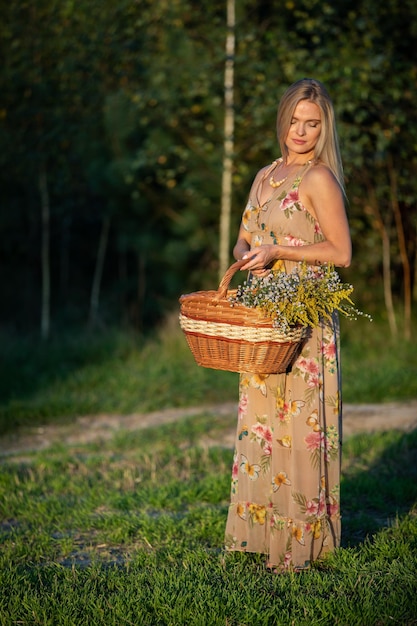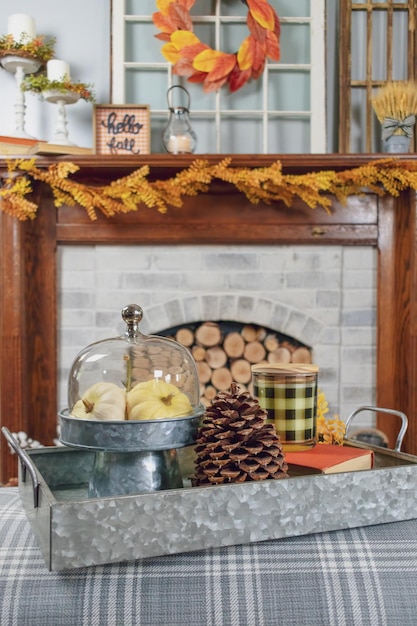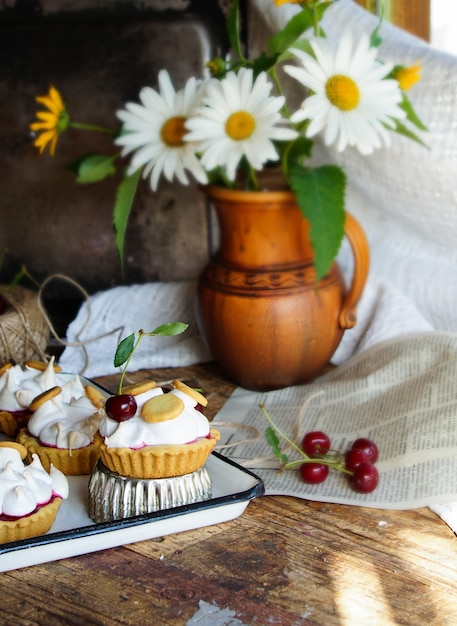The Cottagecore Craze: Unpacking the Appeal of Simple, Rural Living

The ‘Cottagecore’ aesthetic represents a romanticized vision of rural life, emphasizing self-sufficiency, traditional skills like baking and gardening, and a connection with nature, appealing to millions seeking respite from modern stressors.
The ‘Cottagecore’ aesthetic: Why are millions yearning for a simpler, rural life? It is more than just a trend; it’s a cultural phenomenon reflecting a deep-seated desire for a slower, more connected existence. By understanding its roots and impact, we can understand better this appealing movement.
What is Cottagecore? Defining the Aesthetic
Cottagecore is an aesthetic movement that idealizes rural life. It encompasses a desire for simpler times, nostalgia for traditional skills, and a celebration of nature and craftsmanship. But how exactly did it spring into popularity?
The appeal of Cottagecore lies in its promise of escape from the pressures of modern life. It represents a curated fantasy where individuals can find solace in activities like baking, gardening, and crafting, far removed from the digital noise and urban hustle.
Key Elements of Cottagecore
Several elements define the Cottagecore aesthetic, making it instantly recognizable and appealing. These include:
- Nature-Inspired Décor: Think floral patterns, natural materials like wood and stone, and an abundance of indoor plants.
- Handmade Items: From knitted blankets to homemade bread, the emphasis is on creating things with your own hands.
- Vintage Clothing: Flowing dresses, comfortable sweaters, and practical aprons evoke a sense of timelessness.
- Traditional Skills: Gardening, baking, sewing, and other traditional crafts are central to the Cottagecore lifestyle.
Ultimately, Cottagecore is about creating a sense of comfort, authenticity, and connection with the natural world. It represents a conscious effort to slow down and appreciate the simple pleasures in life.
The Rise of Cottagecore: Tracing its Origins
While Cottagecore may seem like a recent phenomenon, its roots can be traced back to various cultural and historical influences. Understanding these roots helps to explain its current popularity.
One significant influence is the Arts and Crafts movement of the late 19th and early 20th centuries, which championed handcrafted goods over mass-produced items and emphasized the beauty of natural materials.

Precursors To the Aesthetic
Before its current name, the ideals were present in various forms:
- Back-to-the-Land Movement: The rise of this was a counter-culture movement promoting self-sufficiency.
- Homesteading: Living in tune with the land is also part of the aesthetic.
- Vintage Fashion: Nostalgia is key to the aesthetic.
Whether through art, societal movements or nostalgia, the rise of the Cottagecore aesthetic follows historical events. It is a culmination of different elements that provide comfort for yearning people.
Why Cottagecore Appeals to Millions: The Modern Disconnect
Cottagecore’s popularity can be partly attributed to a growing sense of disconnect and dissatisfaction with modern life. This disconnect manifests in several ways, making the appeal of Cottagecore all the more potent.
The rise of technology and social media has created a constant barrage of information and stimulation, leading to feelings of overwhelm and anxiety. Many are also concerned about the state of the environment.
The Counter-Culture Movement
Many find it desirable to seek refuge by:
- Escapism: As a response to contemporary pressures, one looks at simpler living.
- Nostalgia: Many look towards the past because they are looking for feelings of comfort.
- Community: By joining Cottagecore, many hope to find community.
In the end, the ideals behind Cottagecore appeal to millions as a response to feeling burned out. By slowing down and connecting to nature, it may offer relief to the modern disconnect.
Cottagecore in Practice: How to Embrace the Lifestyle
Embracing the Cottagecore lifestyle doesn’t necessarily require a complete overhaul of your life. Instead, it’s about incorporating small changes and practices that align with the aesthetic’s values.
This includes activities like gardening, cooking from scratch, and creating handmade items. It also means prioritizing nature, mindfulness, and connection with others.
Practical Tips for Embracing Cottagecore
Want to move toward the simple? Try:
- Start a Garden: Even a small herb garden on your windowsill can bring you closer to nature.
- Learn a Craft: Knitting, sewing, or pottery can be therapeutic and rewarding.
- Cook From Scratch: Baking bread or making jam is a tangible way to connect with the process of creating food.
Ultimately, embracing Cottagecore is about finding joy in the simple things and creating a life that feels authentic and meaningful. It’s about slowing down, connecting with nature, and nurturing your creative spirit.

The Dark Side of Cottagecore: Addressing the Criticisms
While Cottagecore offers a vision of idyllic rural life, it’s not without its critics. It can sometimes be accused of romanticizing this idealized past. It also tends to be highly-curated, representing a one-side view of the lifestyle.
One common criticism is that Cottagecore can be exclusionary, particularly in terms of class and race. The aesthetic often features images of predominantly white, middle-class individuals enjoying rural life, which can be alienating to those who don’t fit that mold.
Common Criticisms
As the culture grew, it developed a few negative side effects:
- Idealization: It is easy to lose touch with the realities of rural living.
- Exclusion: Many feel excluded as the lifestyle tends to feature white stereotypes.
- Consumerism: Many also complain that it promotes the consumption of products.
It is important to recognize Cottagecore’s shortcomings in order to combat the criticisms. In the end, Cottagecore can evolve into a more useful and inclusive culture.
Beyond the Aesthetic: Cottagecore as a Mindset
Ultimately, Cottagecore is more than just an aesthetic; it’s a mindset. It represents a commitment to intentional living, sustainable practices, and a deep appreciation for the natural world.
By embracing the values of Cottagecore, individuals can cultivate a sense of peace, purpose, and connection in their lives. This goes beyond the pictures and trends posted on social media.
Looking into the Future
With all the discourse and criticisms, what would a successful Cottagecore look like?
- Sustainability: Prioritizes ecological awareness and responsible living.
- Creativity: Fosters imaginative expression and resourcefulness.
- Community: Strengthens human connections and mutual support.
The culture can continue to be improved and developed. This may include the sustainability of the environment as more look beyond the aesthetic.
| Key Point | Brief Description |
|---|---|
| 🏡 Simpler Living | Yearning for a life less complicated and closer to nature. |
| 🌿 Nature Connection | Appreciating and engaging with the natural world through gardening and outdoor activities. |
| 🧵 Handmade Crafts | Creating items by hand, from knitting to baking, enhancing self-sufficiency and creativity. |
| 🕰️ Escapism | To escape the modern world, people look into simpler times. |
FAQ
▼
Cottagecore’s aesthetic is defined by a romanticized view of rural life, focusing on self-sufficiency, traditional crafts, and nature. It emphasizes a slower, more intentional way of living connected to simpler times.
▼
The appeal is primarily to finding comfort among the technological challenges. It offers escapism and nostalgia, contrasting sharply with modern living, also prioritizing community, and creativity.
▼
Integrating Cottagecore can involve gardening, crafting handmade items, cooking from scratch, wearing vintage-inspired clothing, and decorating with natural materials. Prioritizing nature and mindful activities will enhance this transformation.
▼
Criticisms include promoting a romanticized, unrealistic view of rural life and being exclusive due to race and class. Some critics suggest that it may also promote unnecessary consumption.
▼
While it is recognized as an aesthetic, it is about a mindset. Its deeper value is intentional living, sustainability, and appreciation for the natural world. These values can cultivate purpose, peace, and a sense of connection.
Conclusion
In conclusion, the Cottagecore aesthetic represents more than just a fleeting trend; it reflects a deep-seated yearning for a simpler, more authentic way of life. While not without its challenges and criticisms, its values of connection, creativity, and sustainability offer a compelling vision for the future.